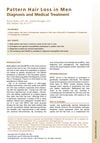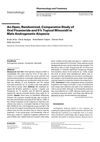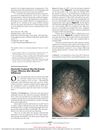Digital Health Platforms Expand Access and Improve Care for Male Androgenetic Alopecia
October 2022
in “
International Journal of Dermatology
”
TLDR Digital health platforms improve treatment for male pattern hair loss.
The study on the digital health platform Keeps, involving 8,983 respondents, found that 81% reported hair regrowth or cessation of hair loss after about 6 months, with 91% adhering to their medication regimen. The platform effectively expanded access to care for male pattern hair loss, particularly attracting younger patients who had not previously considered treatment. The convenience of online consultations and direct medication shipments were key factors for its popularity. The study concludes that digital health platforms can significantly improve treatment outcomes for androgenetic alopecia, though in-person evaluations remain the gold standard.








